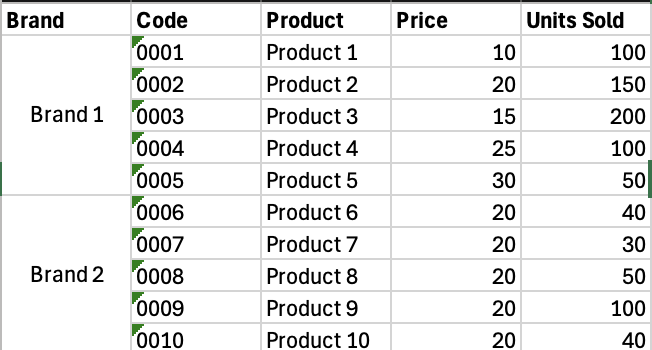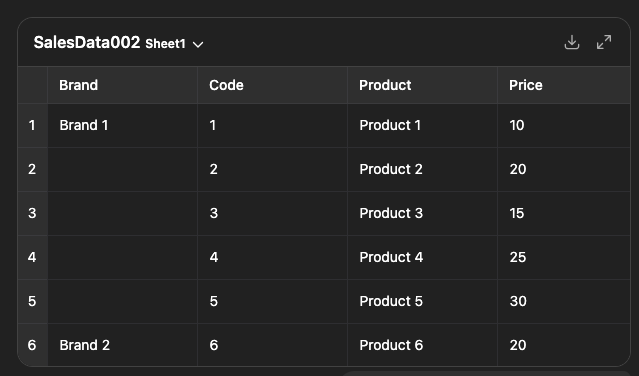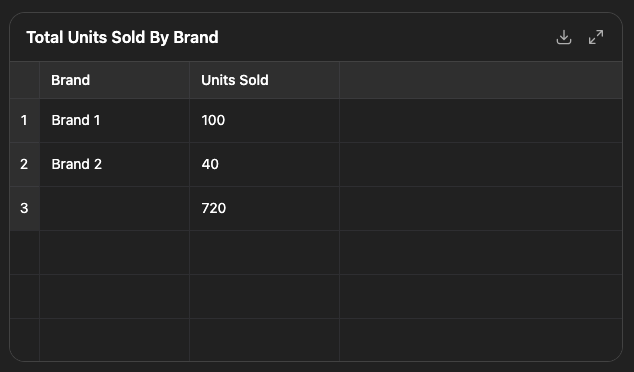Hands On #1: Is our data, processes and culture ready for AI?

Author
Josef SauterIt is very common to find structured Excels optimized for visual output — used for reporting or presentations in organizations. Maybe it's a great input for a quick report, or an auxiliary for a meeting.
But what happens when we want to process this data in a system?
I am going to use a VERY simple, yet incredibly common example to prove my point: even the most basic details matter a lot.
Example

At first glance, this file looks fine. Clear brands, product codes, prices, and units sold. For humans, this is easy to read.
But is this good enough for data processing?
AI at Work
Prompt 1: Can you help me analyze this Excel?

You can already see the system doesn't quite interpret the data as you'd expect.
Prompt 2: What is the total units sold by brand?

The AI reports:
- Brand 1 = 100
- Brand 2 = 40
- Total = 720
Wait… 100 + 40 ≠ 720.
The Lesson
Humans can see what's happening. The Excel structure (merged cells, formatting for visual clarity) confuses the system.
But imagine a user who skips straight to Prompt 2. The sweet reward of "instant results" becomes dangerously misleading.
Now imagine a more complex file with a lot of rows and columns plus plus the urgency to deliver results. The AI's wrong answer could make its way into a report for management — and into bad decisions. One might even conclude: "AI (or the system) does not work."
But the real issue is: the input is not fit for the task.
Beyond Data Analysis
This problem doesn't just apply to analyzing sales data. It also appears in coding, automation, planning, and more complex Agentic AI tasks.
One striking example:
A pharmaceutical company invested heavily in an AI system to optimize global logistics, involivng lots of data and multiple AI agents. The solution worked perfectly in theory — until it overlooked chemical restrictions in certain ports. The result? Massive fines and losses.
The AI did its job. But it was blind to constraints that weren't part of its input. Complexity is ALMOST NEVER linear. Additional components don't add to complexity, they multipy if not potentiate it.
Getting Our Hands Dirty
Organizations need to start their transformation path towards agentic AI and automation, where humans add value doing meaningful tasks and delegate repetitive ones to AI.
But to succeed, we must:
- Build a data-oriented culture.
- Ensure inputs are fit for the task.
- Strengthen knowledge foundations before scaling complexity.
Otherwise, AI will amplify mistakes instead of solving problems.
Final Thoughts
Getting your hands dirty with AI is essential. But it is just as essential to prepare your systems and people with solid foundations.
At AgileSD, we help organizations bridge this gap. We bring a mix of business consulting + software development expertise to design, implement, and operate solutions that truly add value.
Let's talk if you feel your teams are ready to level up with the latest AI-driven technology.
